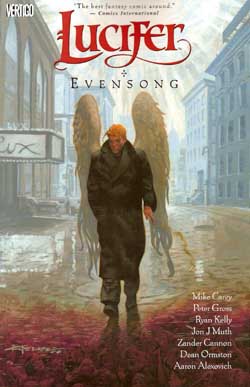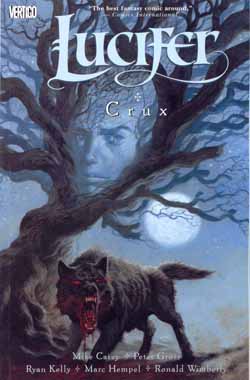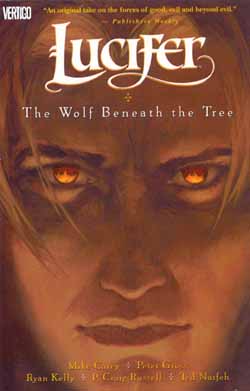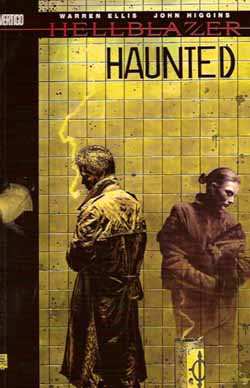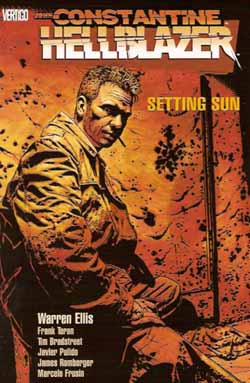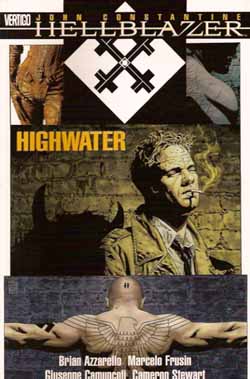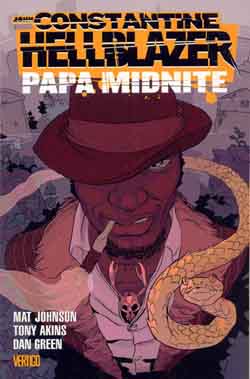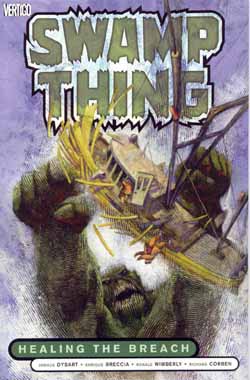By Mike Carey & various
(Vertigo)Â ISBN 9781-84576-448-7
It’s an age old dilemma in comic book storytelling: What do you do the day after you save the universe? Mike Carey answers it by checking in on the survivors in a series of character vignettes that provide closure by counterpointing the Sturm und Drang with charm, humour and melancholy in equal measure.
From issue #70 of the monthly comic, Zander Cannon and Big Time Attic draw Fireside Tales, a yarn of the centaurs and humans of the alternate universe crafted by Elaine Belloc, God’s granddaughter. Evensong (issues #71-72) shows Lucifer setting aright what he can with past allies and enemies as he prepares to depart our universe for the great unknown. The art is by Peter Gross and Aaron Alexovich.
The vulgarly charming demon light relief takes centre stage with issue #73’s The Gaudium Option as the New God gives the repulsive tyke one last clean-up job. Eve (issue #74) and All We Need of Hell (#75) are both illustrated by art veterans Peter Gross and Ryan Kelly and feature a supernatural Girl’s Night Out, and finally the last departure of the Lightbringer, after a suitably telling ultimate chat with the long vanished original God, Yahweh. A perfect end to a masterpiece of comic fantasy.
Or it would be if the book had ended there. However, the editors saw fit to smash the narrative flow by tacking on the one shot Lucifer: Nirvana after that splendid conclusion.
Please don’t misunderstand. Nirvana is beautifully painted by Jon J Muth, an engaging fantasy anecdote as fine as anything else produced by Carey in his career as Lucifer scripter. But you don’t try to stuff in one more shirt after you’ve locked the suitcase. It’s just plain stupid. And annoying. Let’s hope it’s fixed in future editions.
© 2006 DC Comics. All Rights Reserved.

